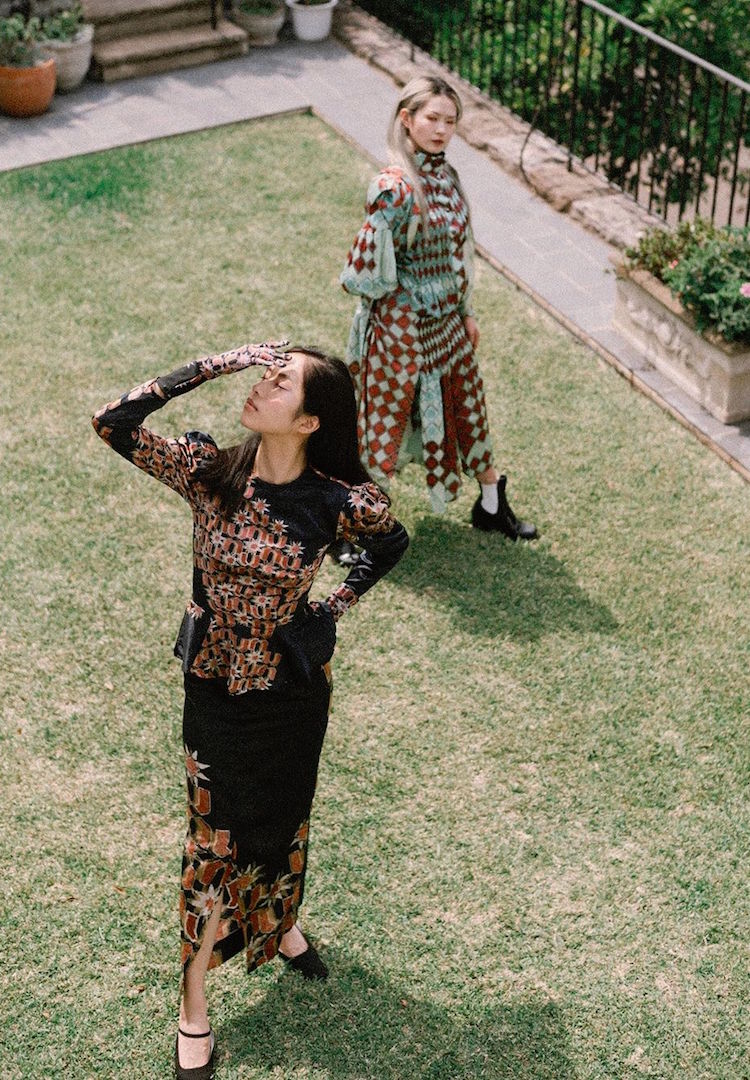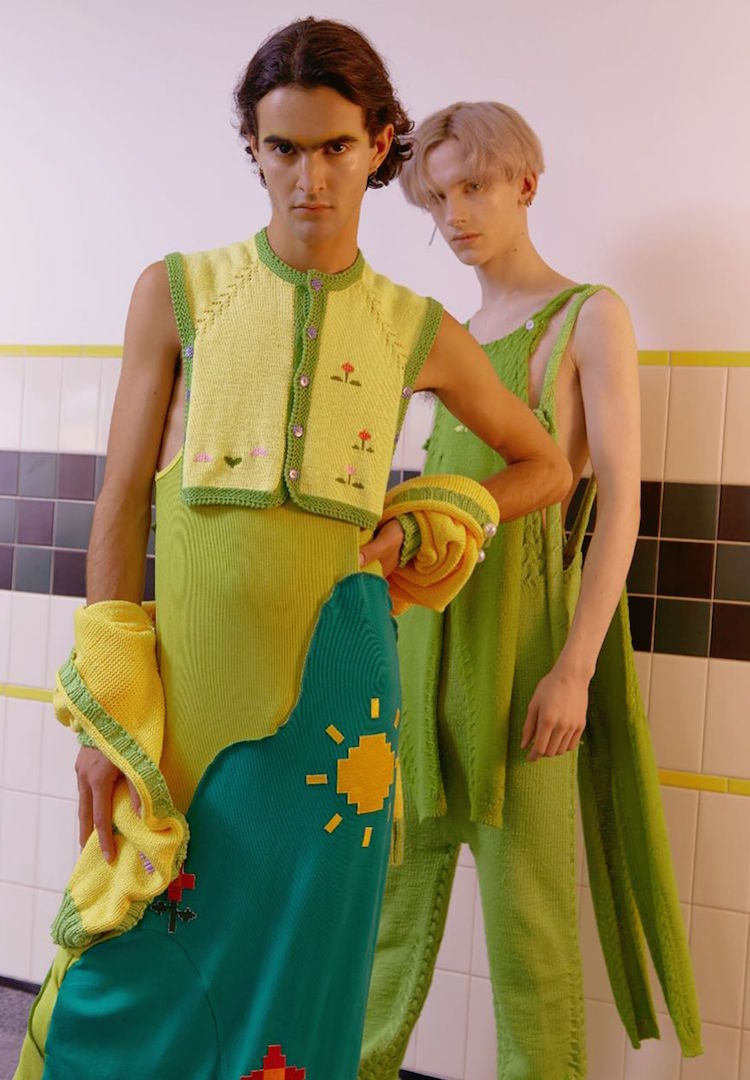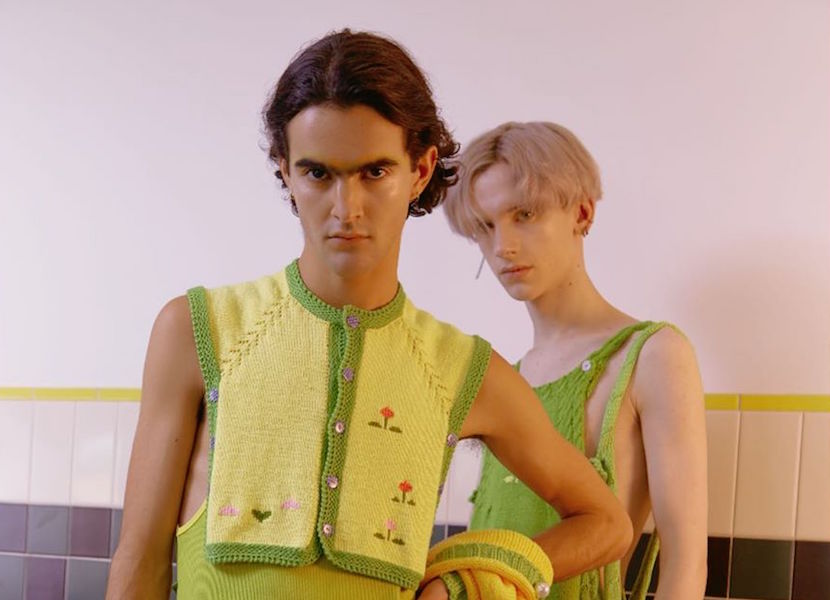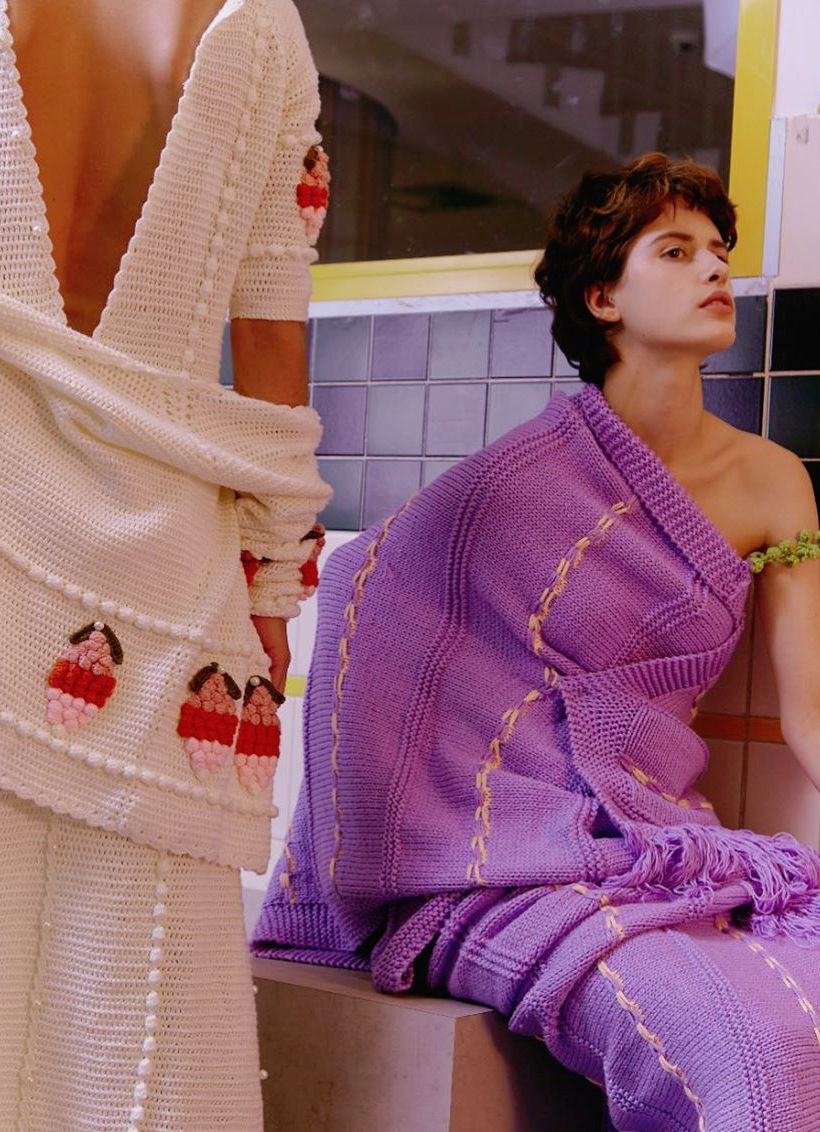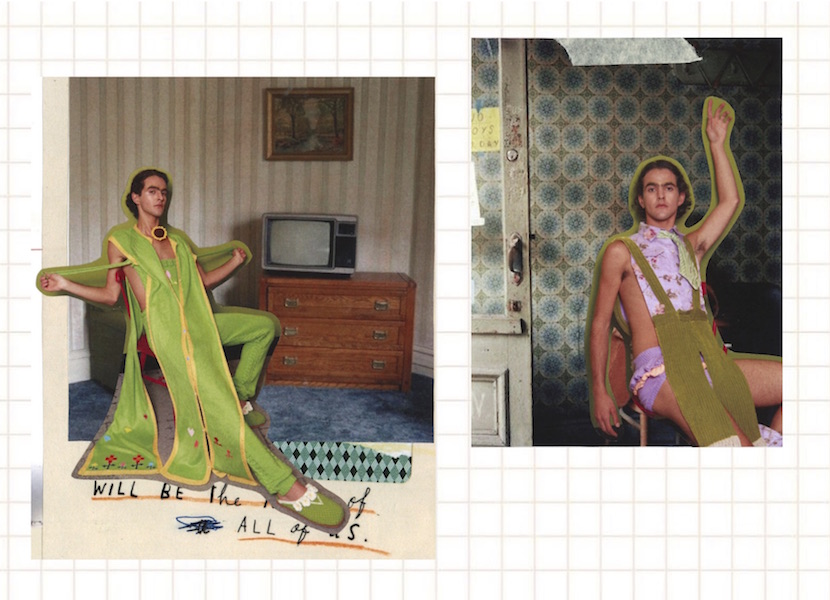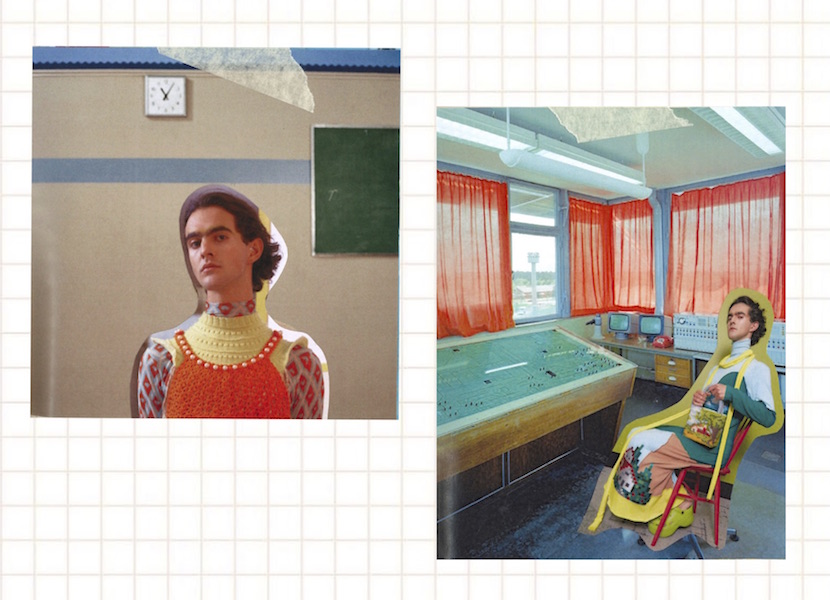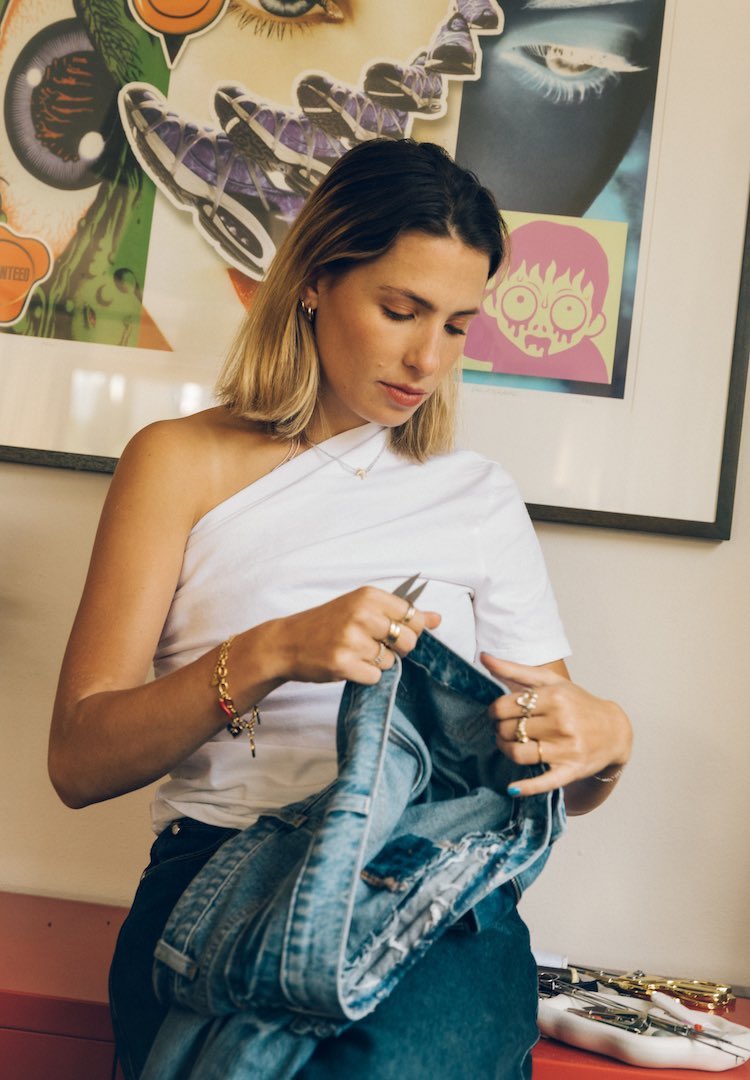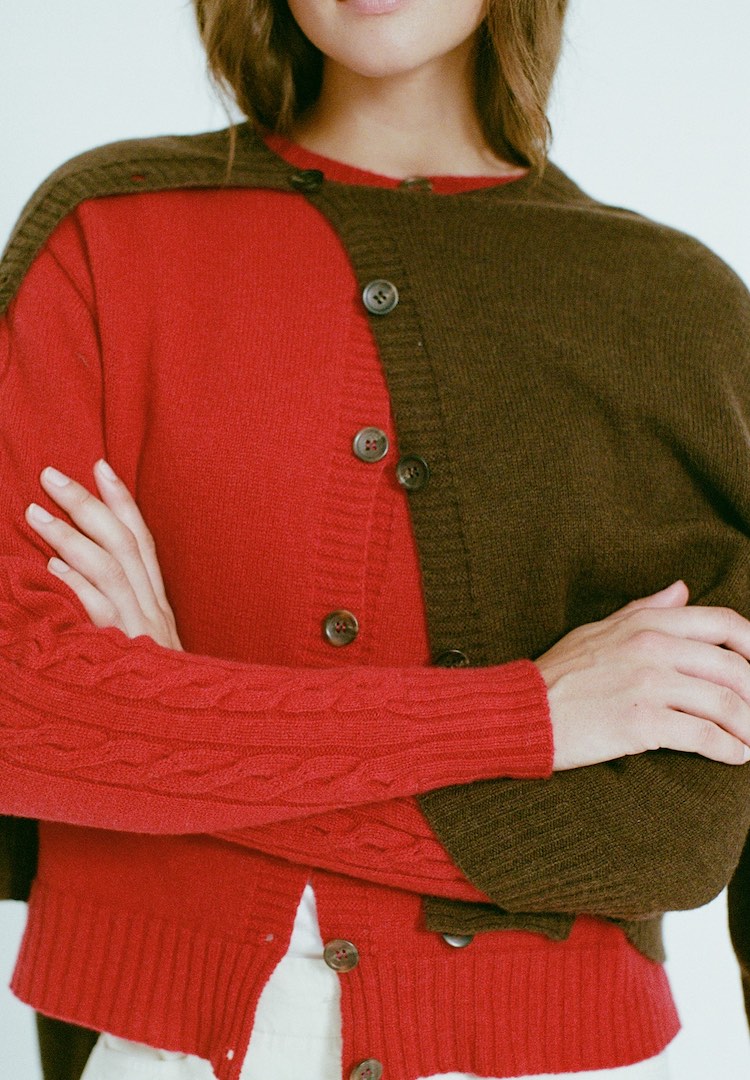Designer Yumi Wang’s graduate collection features genderless knitwear inspired by Northern China in the ’90s
Because knitwear’s for everybody.
Once again, Fashion Journal is the supporting partner of Virgin Australia Melbourne Fashion Festival’s National Graduate Showcase.
The 12 finalists for 2020 have been announced, and they’ve given us an insight into the process behind the collections they’ll be showing.
Next up: Ruoyu Wang and her graduate collection Let Them Be Small.
Please introduce yourself to our readers.
My name is Ruoyu Wang (Yumi) and I was born and raised in China. From an early age, I have shown an interest in styling and handcrafted work. My family is the main influence on my awareness of fashion, which helps me to have a strong personal style and establishes my own way of working.
Tell us about your collection.
My collection is called Let Them Be Small. It draws on themes of collective memory and cultural nostalgia and is inspired by the fragments of my childhood. It is a non-binary collection with an emphasis on knitwear, which aims to challenge and blur the line between men’s, women’s and children’s wear. For this collection, I used materials and techniques that were trends in the ’90s in Northern China, reimagining beaded toys, grandma sweaters and papercraft into fashionable garments by focusing on textile combinations, motifs, colour and scale.
When did you know you wanted to get into fashion design?
I guess it’s quite a brave and sudden decision for me to get into fashion. I’ve shown interest from an early age, but there is no one in my whole family doing a job related to art or design. By the time I was in high school, I was still learning commerce and had no drawing skills. But that was also the time when I realised design was something I might not have been confident in, but I was passionate about it.
How do you describe your design style?
I enjoy experimenting with materials and techniques that wouldn’t normally work together and finding a balance out of that clash. I don’t design for a specific style. I have a collection that is really edgy, a gender-neutral one and womenswear that’s pretty “monster-like”. But people said there was something in common between these collections, and that’s when I realised things about my design style.
What were the major points of inspiration for your graduate collection?
The initial inspiration was the fragments of my childhood: blurry memories, old photos of myself, the kind of textiles I used to wear and a nostalgic smell. The starting point was my own experience and my family, and I used that individual experience as a medium to reinterpret the collective memories of ’90s China, and the meaning of gender and non-binary clothing.
Why was it important to you that your collection wasn’t gendered?
Some people might get confused or think it’s aggressive letting males wear my collection, but children’s wear – which is one of the main inspirations for this collection – doesn’t really follow that binary either. For example, some pieces in the collection were inspired by open-crotch pants or nappies, which are considered genderless. In the past few years, we’ve been seeing the lines between traditional male and female binaries becoming increasingly blurred, and gender is no longer classified just biologically but can be seen as a construct of the mind. It’s about how people think of themselves.
What is the effect of ‘clashing’ textiles and colours, and why did that appeal to you?
I have a strong emphasis on textiles. Working in this way is like doing an experiment, mixing or layering elements and colours that don’t normally work together. Most of the time their chemical reactions are surprising, and what I do is recognise that potential and put it where it belongs.
Tell us about the experience of putting together your graduate collection.
Looking back, it’s quite unexpected how I put my graduation collection together. Initially, I was thinking of making a collection for myself as a graduation gift that celebrated my childhood fantasies. The beginning was hard because the concept was broad, and there is a fine balance between keeping a personal reference and arousing the collective memories of the audience. Introducing jersey and hand-knitted pieces was a breakthrough. I have no idea how to knit by hand so that’s where my mum took over, which adds precious meaning to the collection itself.
What part does sustainability play in your design practice?
My previous study was about upcycling and sustainable fashion, achieved by manipulating op-shop garments and fabric scraps to create couture fabric swatches. That experience gave me a new understanding of sustainable fashion and, ever since that, every decision I make has been unconsciously influenced by sustainable thinking.
What’s next for you?
At the moment, I’m preparing for competitions and internships in Melbourne and hopefully some international opportunities as well.
Find more of Ruoyu’s work here.

